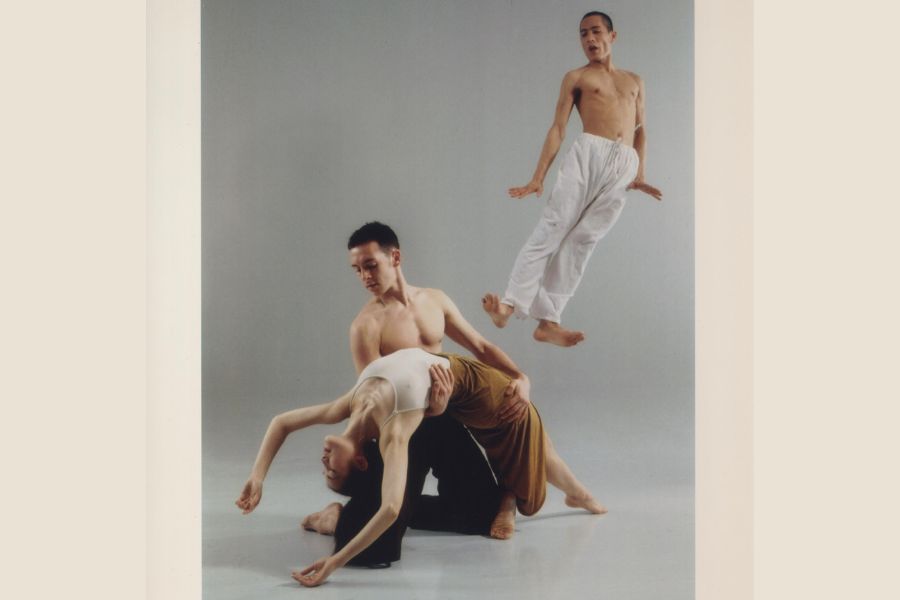Answering the Call to Lead
Dante Puleio (M.F.A. ’17) reflects on his path from student to artistic director of the José Limón Dance Company
By Diana Kalaji
If dance showed Dante Puleio how to move, the José Limón technique taught him how to move through life.
“When I discovered dance, I woke up,” said Puleio. “But when I discovered Limón, it woke me up inside the dance world. I understood it physically. And I wanted to live here.”
Now in his fifth year as artistic director of the José Limón Dance Company, Puleio is only the sixth person in the company’s 75-year history to hold the title. A professional dancer and choreographer who has toured internationally, Puleio credits his time as a graduate student at UC Irvine as a turning point.
“I wouldn’t be in this job had I not had my experience at Irvine,” said Puleio. “The writing I did, the research I did, the relationships I built — all of it laid the groundwork.”
His M.F.A. thesis, Contextualizing Mid-Century Modern Dance for the Contemporary Audience, became the foundation of the presentation he gave to the Limón board of directors when he applied for the role.
Raised in central New Jersey, Puleio was bopping around to Donna Summer before he could talk — dancing to “Bad Girls” and “She Works Hard for the Money.” But it wasn’t until a bar mitzvah at age 13, dancing to Deee-Lite’s “Groove Is in the Heart,” that he realized others saw what he felt.
“People kept coming up to me saying, ‘You’re such a great dancer,’” said Puleio.
At the time, dance wasn’t part of his plan. He entered college as a psychology major and a theater minor, taking a dance class only to fulfill a requirement. But a professor, Kristin Degnan, pulled him aside.
“She was like, ‘You should be doing this,’” said Puleio. “I called my parents, told them I wanted to pursue dance, and they said, ‘Do it now. You can be a doctor later.’”
Puleio later trained at Laban in London and the Northern School of Contemporary Dance in Leeds and earned his Limón certification at New York University. After college, he joined the Carolyn Dorfman Dance Company in New York City while his company was performing at the Limón Studios, and he was offered an audition at the Limón Dance Company.
“Artistic director Carla Maxwell pulled me aside and taught me a solo from Missa Brevis for 25 minutes,” said Puleio. “Then she offered me a job.”

Image: (left to right) Kimiye Corwin, Dante Puleio and Robert Regala perform Crossroads in 2000. Choreography by Donald McKayle for the José Limón Dance Company. Courtesy of the José Limón Dance Company. Photo by Beatriz Schiller.
But after years of success — including dancing for the queen of Holland and appearing on the cover of the New York Times arts section — Puleio hit a wall.
“The same day that the Times came out, Verizon called saying they’d shut off my phone if I didn’t pay,” said Puleio. “There was this incongruency. I had made it, but I couldn’t make ends meet.”
“There was this incongruency. I had made it, but I couldn’t make ends meet.”
Unsure what was next, Puleio decided to apply to top M.F.A. programs, with UC Irvine standing out — not just for its faculty but because it was home to contemporary dance legend Donald McKayle. McKayle was also the first choreographer Puleio worked with at Limón.
“Starting my career with Donald and finishing my education with him felt intentional and purposeful,” said Puleio. “It felt like a calling card.”
At UC Irvine, Puleio found mentors in Professors Loretta Livingston and Mary Corey, who encouraged him to explore the questions that kept pulling at him: Why did modern dance lose its accessibility? What could be done to reconnect it with today’s audiences?
Now, as artistic director, Puleio carries those questions into his stewardship of the Limón Dance Company, updating Limón’s work with care while ensuring dancers can see themselves in the repertory.
“We live in a very different time,” said Puleio. “We have nonbinary identifying dancers in the company, and it’s important that who is in my audience is reflected onstage.”
The ensemble recently restaged La Malinche, Limón’s first work for the company, using original costumes and music in a historically informed reconstruction. Puleio calls it a tribute to the power of resilience — both Limón’s and his own.
“The Limón technique is about falling and recovering, and our relationship to gravity,” said Puleio. “The metaphor of that goes beyond what happens in the studio.”
On Sept. 25, Puleio returns to UC Irvine with the company for a performance at the Irvine Barclay Theatre, nearly a decade after he first arrived as a graduate student.
“It feels so exciting,” said Puleio. “It’s like, hey, I did it. I did the thing education is supposed to do.”
He hopes the performance reminds audiences of Limón’s enduring relevance as a queer Mexican American immigrant who created an internationally studied dance technique in the 1950s.
“If I can steward this organization and do what José did with his company and hand that off to someone, then I will have done my job,” said Puleio. “I will have fulfilled my potential as the bearer of this legacy.”
To learn more about the José Limón Dance Company, visit limon.nyc. For tickets to the José Limón Dance Company performance at the Irvine Barclay Theatre, visit thebarclay.org.
Please visit our secure direct giving page and make a gift to support CTSA today!

